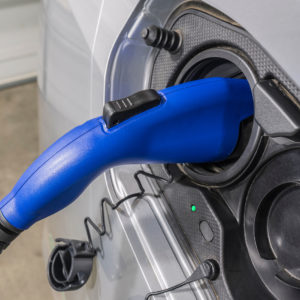Enacted in 2008, the EV tax credit — which allows electric car buyers to qualify for up to $7,500 in federal subsidies — was meant to foster the fledgling electric vehicle industry. By law, the credit phases out once a manufacturer makes its 200,000th car. Tesla reached that threshold earlier this year and its credit will begin phasing out next year. GM is expected to reach it by the end of 2018, and Nissan is not far behind.
Proposals in the House and Senate — supported by intense lobbying by Tesla, GM and Nissan — would lift the cap on the electric vehicle (EV) tax credit and preserve this subsidy for large car makers.
Congress should reject any effort to broaden this tax credit. In fact, lawmakers would do well to repeal it entirely. The EV tax credit has a poor track record of boosting electric vehicle sales or limiting carbon emissions and constitutes a massive subsidy from ordinary taxpayers to the wealthiest Americans.
In 2016, 57,066 individual taxpayers claimed $375 million in EV tax credits. The vast majority of these individuals earn more than $200,000 per year. Since high-income individuals make up the majority of electric car buyers, the top 20 percent of income earners receive about 90 percent of EV tax credits. Even more striking, more than 99 percent of total EV tax credits in 2014 went to households with an adjusted gross income above $50,000.
Nor is the cost of the EV tax credit insignificant. According to nonpartisan estimates, under current law the EV tax credit will cost $7.5 billion from 2018 to 2022. If Tesla, GM and Nissan get their way and the credit is uncapped, its cost could grow considerably.
In short, the EV tax credit represents billions of dollars flowing from ordinary taxpayers — who will likely never benefit from the tax credit — to the wealthiest Americans, for whom the $7,500 maximum credit is a relatively less significant incentive.
Scientific research also indicates that the rationale for promoting electric car ownership — reducing carbon emissions — is largely bogus. Compared to today’s new, low-polluting internal combustion vehicles, the energy generation required to power electric vehicles will likely emit more harmful air pollutants (including sulfur dioxide, nitrogen oxides and particulates), not less. While electric cars do reduce carbon-dioxide emissions, that reduction is expected to be below 1 percent of total forecast U.S. carbon-dioxide emissions by 2050 and will have no measurable impact on global climate conditions.
Despite the EV tax credit and other government incentives, the electric vehicle market continues to face sluggish growth in demand. This might be explained by the fact that even after federal tax credits are taken into account, electric vehicles still have higher lifetime costs than conventional automobiles. Consumers must also consider the fact that electric vehicles often have short ranges and take many hours to recharge. Out of 17.25 million total automobile sales in the United States last year, electric cars accounted for fewer than 200,000 — barely 1 percent of the market.
Picking winners and losers in the marketplace should be business of consumers, not the job of the government. Perhaps one day advances in technology will make electric vehicles more affordable, reliable and convenient than internal combustion vehicles. When that day comes, electric vehicle makers will thrive because of market competition and consumer choice, not government handouts.
It’s time to repeal the EV tax credit and let the market work.

